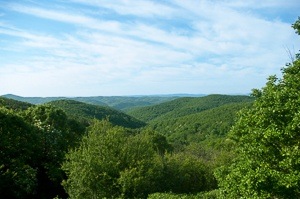
Balgari village: Peak Diado Valcho and “Briar root” area near Silkosia Reserve
It is a pleasant and easy route that runs along the border of the Silkosia Reserve, located on the territory of Strandzha Nature Park. On this trail, one crosses a lovely forest with a wide variety of vegetation species. One plant is an instant eye-catcher – the Rhododendron ponticum. This plant, indeed, with its shiny evergreen leaves, in itself, creates an association with the vegetation of exotic and distant tropical jungles. At the end of the route, we reached the highest point in the area, which offers beautiful views of the surrounding green hills. There is a habitat of another rare and protected plant – the Briar root. At the request of the hikers, from there can continue to the village of Kosti.
How to reach “Diado Valcho” Peak and “Briar root” area near Silkosia Reserve in Strandzha mountain – GPX file Download file: Balgari-Diado-Valcho-EN.gpx GPX file
USEFUL: For more information on how to open GPX files with a smartphone, see this link .
For planning your visit to the place or accommodation in the nearby settlements, can use the collection of assistive tools – Google Road Map with calculator in km, flights to Bulgaria, rental cars, weather forecast, hotel search, timetables of buses in the region, see this link.
Route description
The start of the route is at a point on the asphalt road between Balgari and Kosti villages. It is located 2 km from the village of Bulgari and 4 km from the village of Kosti. At the outset, there is a vast meadow where can park a car. As a matter of fact, some tourists leave their vehicles in Balgari village and come here by walking along the asphalt road. Could reach Balgari village also by bus from Tsarevo, which departs in the morning and the afternoon, with the final stop in the village of Kosti. For more information – http://avtogaratsarevo.eu/
From the point, on the asphalt road, it starts a wide dirt road. The Forestry trucks also use it to reach Diado Valcho Peak.
Distance: 4.4 km one way
Displacement: 30 m; It takes 40-50 minutes in one direction.
It is a good idea to equip yourself with hiking shoes or sneakers, long trousers, insect spray and water. In case you visit this place in the summer or the spring, there is a danger of ticks, so take the necessary precautions. Also in the summer – it’s possible to meet whole swarms of annoying flies typical for Strandzha mountain. So it is advisable to wear a hat and dark glasses that could somewhat protect you.
The road is wide enough, and you can move along it also with a car an off-road type.
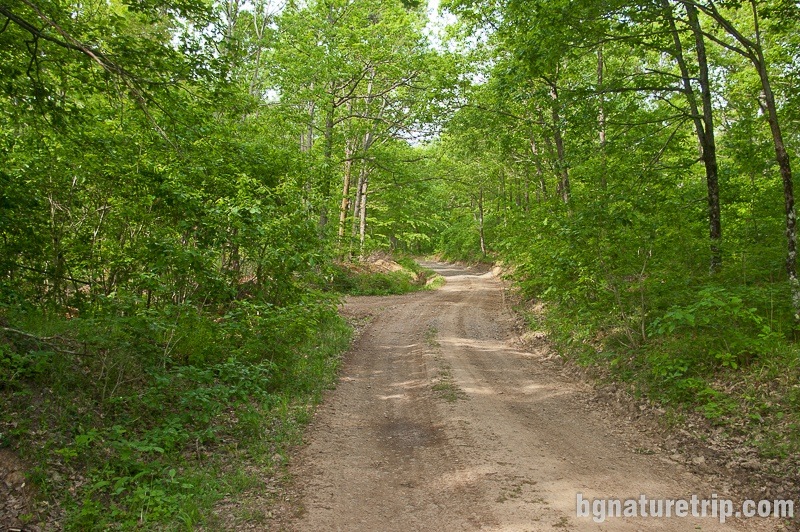
The most suitable month for the walk is May, when is the flowering of the Rhododendron Ponticum, but undoubtedly also in the other seasons, the visual perceptions could be impressive.
Silkosia Reserve
The trail runs along the periphery of the Silkosia Reserve – the oldest in Bulgaria. It was declared as such in 1933. Since the Reserve is strictly regulated, every kind of human activity is prohibited. There is only one hiking trail that crosses the Reserve and is allowed by the MOEW for a walk, but upon our visit to the area in 04.2019 we found it to be at all not suitable for tourism – it was completely overgrown with grass and shrubs. Its beginning is at a point, which is 200 m in the right from the start of the described here route.
So, to get an idea of the resources of the Reserve one has to walk along its periphery. In fact, the shown here trail, is one of the routes, and the other one starts from the village of Kosti and leads to the secret waterfall Raykov vir – we have already told about it in our previous publication.

Plants
We came across many representatives of Rhododendron ponticum, a species that has lived here for millions of years, naturally. Before,(throughout the entire Tertiary period 65 million years ago) inhabited the whole of Europe, but in the present time occupies typically only Strandjzha and the Caucasus.

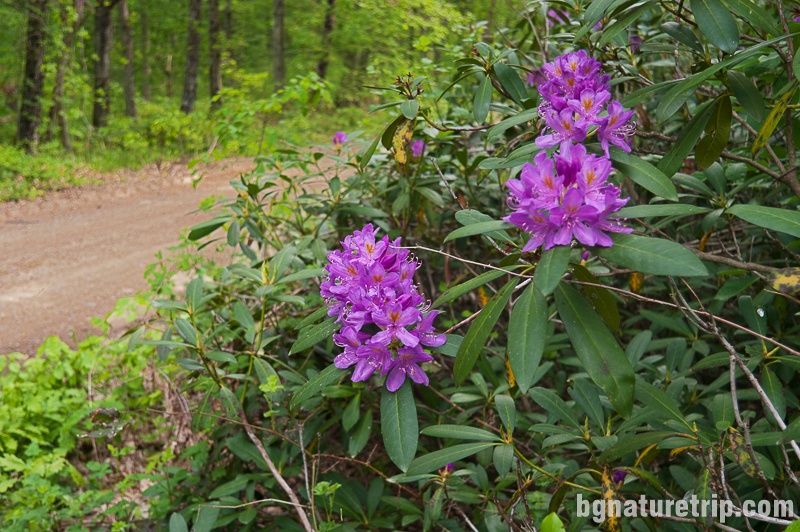
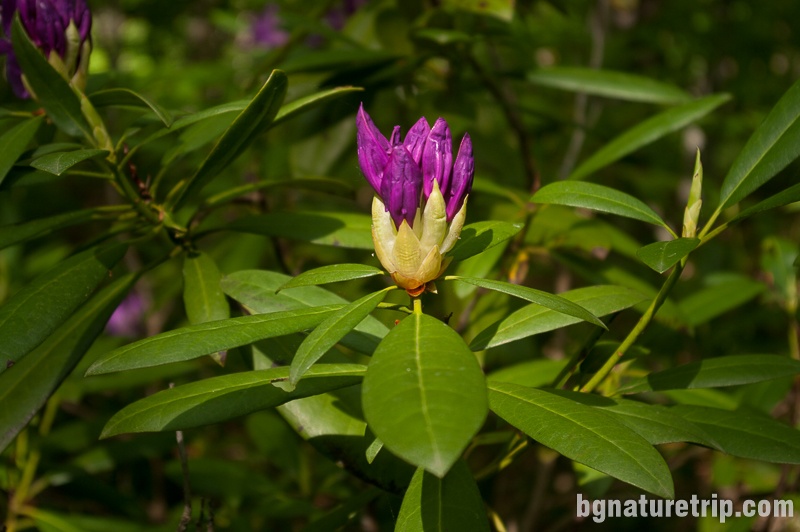
The rest of the species we saw here flourished are Abraham-Isaac-Jacob ( Trachystemon Orientalis ), Salvia cistus (Cistus-salvifolius-L.) as well as Briar Root (Erica arborea) at the end of the route on Peak “Diado Valcho”.
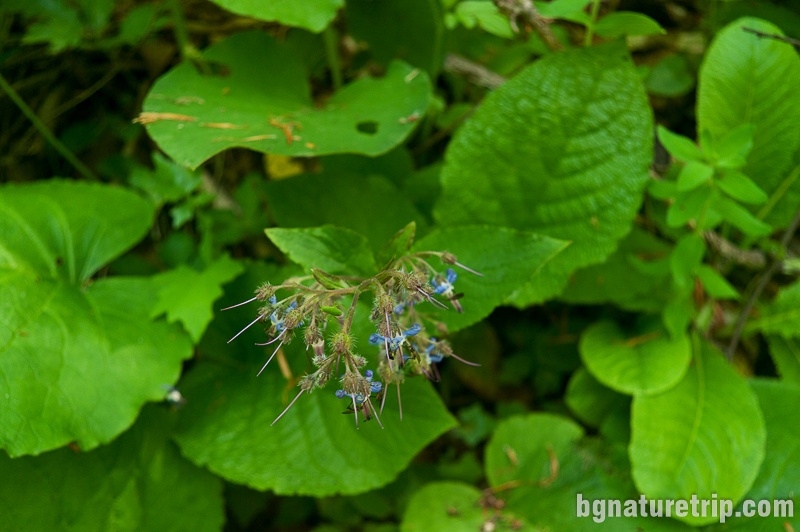
It is the plant with big leaves, and it covers the forests here. Besides, it contributes to the exotic appearance of Strandzha mountain. Widespread in the area here, but it is rare into the rest of Bulgaria, which is why the species is protected by the Law and forbidden to tear.
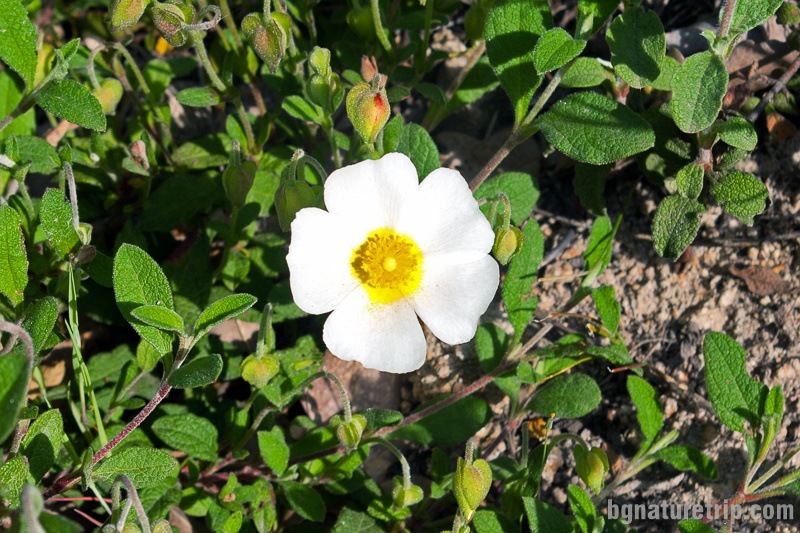
Diado Valcho and the Protected area “Briar root”
From here it reveals a beautiful view to the south towards the surrounding hills. A part of the area has been declared a protected to preserve the habitat of the rare briar root plant (Erica Arborea). It is protected according to the Bulgarian Law. The name of the plant in Bulgarian is “Piren”. Therefore you can see this name on the signs indicating the protected area – “Пирен” written in Bulgarian.
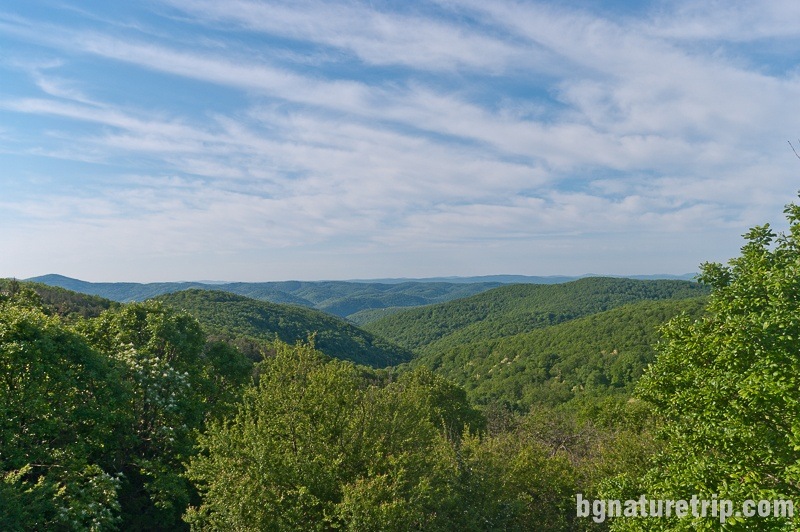

It has evergreen needle-like leaves and thrives on dry and stony soils. It is a relict species from the Tertiary period (65 million years ago).
At the request of tourists, eventually, from here they can continue along the path to Kosti village, there is only a smooth downhill. The length of this route is about 7 km from “Diado Valcho”.
We haven’t hiked along it but would recommend to the interested to see the map of BGmountains with the trails. Besides, to use it on a terrain with a smartphone – see this description for using the Oruxmaps app.
Preservation of nature
The entire area where is the eco-trail lays into the territory of Strandzha Nature Park and the European ecological network Natura 2000. Also, it has a forest status. Therefore some rules should be observed when visiting to protect natural resources.
To put it briefly – do not throw away waste, do not tear plants, do not light a fire, no camping, and let the place look like you’ve found it!
For more details, or if you intend to carry out particular activities other than a tourist walk, the full text of the laws can read here.
- Strandzha Nature Park – current prohibitions and regimes ( the page of Bulgarian “Executive Environment Agency”)
- Bulgarian Forestry Act
- Protected area “Briar root” – current bans and modes, for the part of the route, where crosses this area ( the page of Bulgarian “Executive Environment Agency”)
The Covered Bridge
Together with the walk, one could make a picnic in the woods at an attractive shelter, which is something like a local landmark. It was built on a bridge over a small river. It lays near the starting point of the route after 200 m in a left turn. Further, there are 150 m along another path to reach the shelter (see GPX track above).
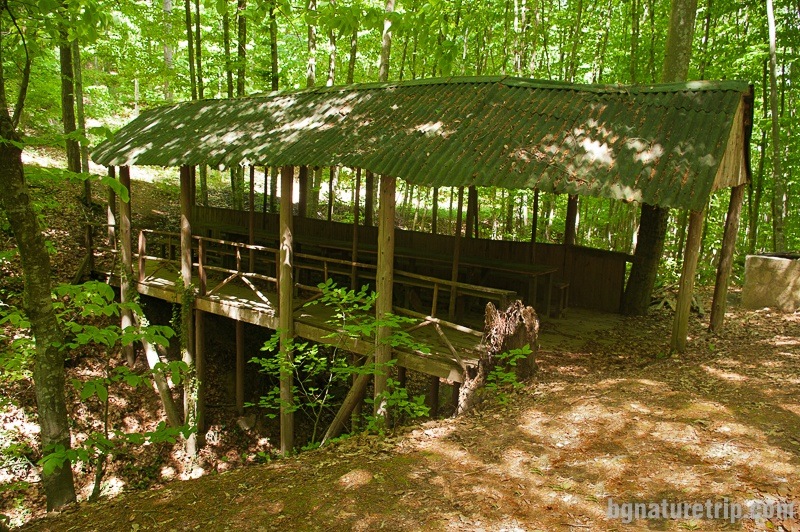
What else can see near Kosti village
- Kosti village and the 14 brothers oaks. On this link will find additional information about Kosti village, as a destination for ecotourism and rural tourism, as well as photos of the old wooden houses and the church, which is one of the most beautiful in Strandzha mountain.
- The second option is the “Kazancheto” waterfall in “Bogorodishki dol” area. There you can also see the Rhododendron ponticum
- A third option is the secret “Raikov Vir” waterfall. It is one more place where you can see the Rhododendron ponticum
Continue the trip
In case you drive in the west direction to Malko Tarnovo, can pop in the villages of Kondolovo and Gramatikovo for other opportunities for ecotourism and historical landmarks as well as see old wooden houses – representatives of the Strandzha architecture style.
In case you drive in the east, towards the Black Sea, you can visit the area “Marina Reka” for one more hiking trail past lovely forest with rare plants that. After that can continue to the Black Sea resorts Tsarevo, Varvara, Ahtopol or Primorsko (north) for other landmarks, beaches and lovely seascapes.
USEFUL: To get a quick and easy idea of where these places are – see the destinations marked on our Google map. There all the landmarks we’ve written about, are marked as tags with links.
Also, to plan your trip to them, you can use the selection of assistive tools: Google Road Map with calculator in km, flights to Bulgaria, rental cars, weather forecast, hotel search, timetables of buses in the region.
Offers for hotels nearby, in Tsarevo city
Booking.com